The apple tree was a gift. We’d just moved to a new home and I had a new baby on my hip. Friends brought lunch…and an apple tree.
We did not have a perfect spot for the tree, so we planted it in the best spot we could. Unfortunately, this was partly under the shade of a large established ash tree, but the apple tree was so little we figured it wouldn’t be a problem.…
The baby grew and the tree grew. To begin with our apple tree had about as many leaves as she had hair, but somehow it thrived in its less than adequate location. And she, too, thrived—and grew hair!
 By the time she could eat apples, we were getting a few on our little stick of a tree. It had entered its adolescent stage—tall and bit gangly, not very filled out. But it produced wonderful apples, none-the-less. By then we’d lost its tag and so didn’t know what kind of apples they were. Later I would do some research and comparisons and we’re pretty confident they’re Haralsons: Firm texture with a complex tart flavor. Good for fresh eating and cooking. Especially good pie apple.
By the time she could eat apples, we were getting a few on our little stick of a tree. It had entered its adolescent stage—tall and bit gangly, not very filled out. But it produced wonderful apples, none-the-less. By then we’d lost its tag and so didn’t know what kind of apples they were. Later I would do some research and comparisons and we’re pretty confident they’re Haralsons: Firm texture with a complex tart flavor. Good for fresh eating and cooking. Especially good pie apple.
Some years there were enough apples for a pie or some applesauce. Some years there were just enough to be plucked coming home from the school bus on an autumn afternoon. The apple tree grew taller (and filled out some) as the children grew taller, and it gave both nourishment and delight as our kids grew up.
 Eventually, we noticed that the looming ash tree was likely compromising our little apple tree. But what was to be done? They were both mature trees—it wasn’t like they could be moved. The apple tree adapted, stretching toward the street, away from the shade, chasing the sun. It became noticeably crooked, but only when looked at from the neighbor’s yard. From the house it looked fine, and so our neglect continued. But then the ash tree began to look dangerous and seemed doomed with the Emerald Ash Borer on the loose. So we had the tree taken down. This was unexpectedly difficult, even though it was a scrappy tree that felt dangerous to walk or park under, and even though it was keeping its thumb on the apple tree. Losing a tree is always hard. What I think of as The Scar is still visible in the yard. It was a big tree.
Eventually, we noticed that the looming ash tree was likely compromising our little apple tree. But what was to be done? They were both mature trees—it wasn’t like they could be moved. The apple tree adapted, stretching toward the street, away from the shade, chasing the sun. It became noticeably crooked, but only when looked at from the neighbor’s yard. From the house it looked fine, and so our neglect continued. But then the ash tree began to look dangerous and seemed doomed with the Emerald Ash Borer on the loose. So we had the tree taken down. This was unexpectedly difficult, even though it was a scrappy tree that felt dangerous to walk or park under, and even though it was keeping its thumb on the apple tree. Losing a tree is always hard. What I think of as The Scar is still visible in the yard. It was a big tree.
We thought the apple tree would straighten itself with more sunshine, but it has rather held its crooked course. Like most plants we grow, it kinda has had to fend for itself…we’ve been happily consumed with growing children until quite recently.
Spring 2019, the apple tree put out a bevy of beautiful blossoms. Alas, a late spring frost killed every single one and we had zero apples last fall as “the baby” started her senior year in high school.
Spring 2020, that baby on my hip when our apple tree came to us graduated from high school. The tree outdid itself in celebration—made 2019’s exceptional blossom output look mangy! It was a major sign of life for us while we were quarantined in the early days of COVID-19.
There was no late frost last spring.
 Come fall, our girl went to college—far away and during a pandemic (she’s doing just fine.) And the blossoms that turned to hard green apples over the summer turned to red apples in the fall…and we began to realize how many apples we had on our hands. So did the neighborhood. People walking and driving by slowed down or stopped to gawk.
Come fall, our girl went to college—far away and during a pandemic (she’s doing just fine.) And the blossoms that turned to hard green apples over the summer turned to red apples in the fall…and we began to realize how many apples we had on our hands. So did the neighborhood. People walking and driving by slowed down or stopped to gawk.
My husband guesstimates over a thousand apples have been picked—not counting the hundreds that fell off the tree when the top pruned itself. Not counting all the ones that have gone to the squirrels. We have spent our first weeks of empty-nesting processing apples. Working together, we can fill four pie pans and the crockpot or food dehydrator in about 45 minutes.
 We should’ve kept track, of course, but we’ve hardly been able to keep up, so we’re stuck with what we’re confident are conservative estimates. We’ve made close to twenty pies—eight of them in the freezer now. (I make a really good apple pie, if I do say so myself.) Twelve quarts of apple sauce at least (they’re buried in the freezer and hard to count now.) As many batches of dried apples—each batch using about 50 apples. And we’ve pressed large bags of apples upon friends, neighbors, and relations, of course. We’ve encouraged children in the street to steal from the tree. We sent out invitations to the squirrels to make merry.
We should’ve kept track, of course, but we’ve hardly been able to keep up, so we’re stuck with what we’re confident are conservative estimates. We’ve made close to twenty pies—eight of them in the freezer now. (I make a really good apple pie, if I do say so myself.) Twelve quarts of apple sauce at least (they’re buried in the freezer and hard to count now.) As many batches of dried apples—each batch using about 50 apples. And we’ve pressed large bags of apples upon friends, neighbors, and relations, of course. We’ve encouraged children in the street to steal from the tree. We sent out invitations to the squirrels to make merry.
Abundance doesn’t even begin to describe our apple situation this year. What a gift that tree is! And what a joy to think of the parallels with our daughter’s growth—it is, really, her tree. When she comes home for Thanksgiving, she will be greeted with apple pies, apple sauce, apple scones and apple cake.….
(And yes, we have someone who knows about apple trees coming to assess the situation. It deserves a little TLC, that sweet apple tree.)

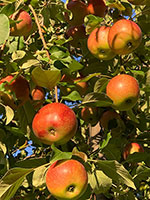
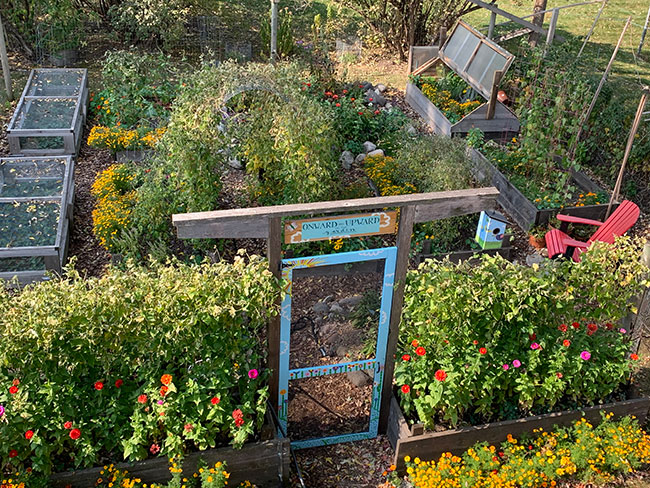




 I was a born a week after the moon landing in 1969. Somehow, in family storytelling and conversation—and later, in my education—I came to understand that my birthday was special. That I myself was…well, special…simply for having been born during such a historic week.
I was a born a week after the moon landing in 1969. Somehow, in family storytelling and conversation—and later, in my education—I came to understand that my birthday was special. That I myself was…well, special…simply for having been born during such a historic week.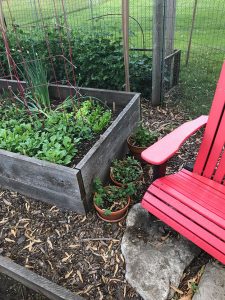
 Our garden is behind schedule this year. An uncooperative Minnesota spring combined with health issues conspired against us. We just managed to get the seedlings we’ve been growing in the laundry room planted this past weekend—they were starting to look a titch anemic under their artificial lights.
Our garden is behind schedule this year. An uncooperative Minnesota spring combined with health issues conspired against us. We just managed to get the seedlings we’ve been growing in the laundry room planted this past weekend—they were starting to look a titch anemic under their artificial lights.
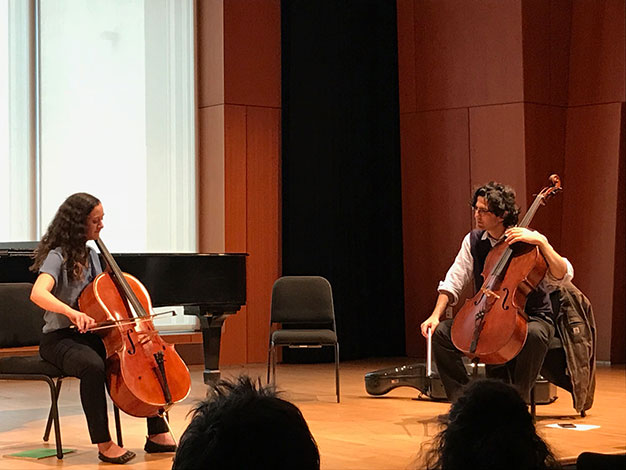


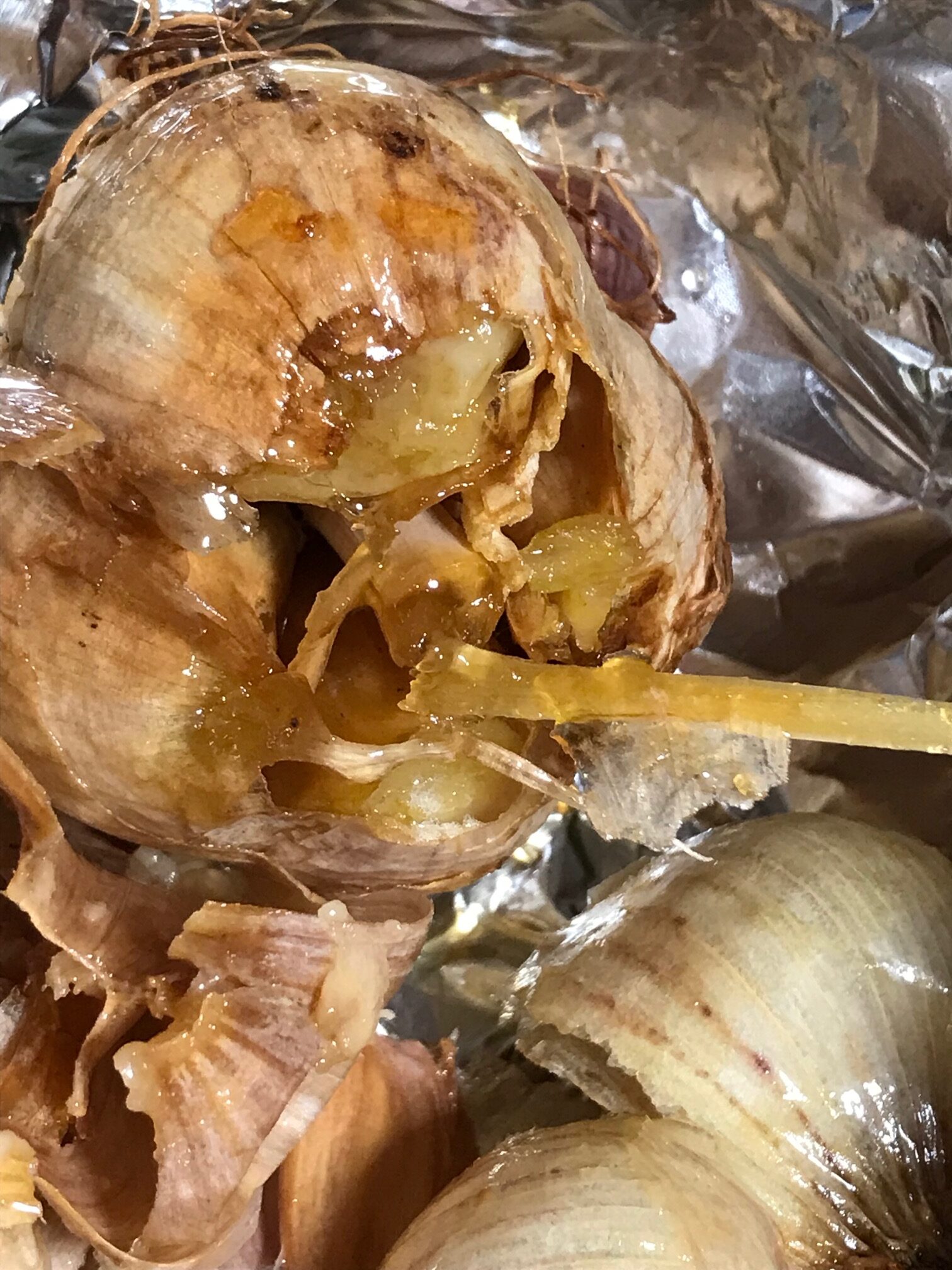





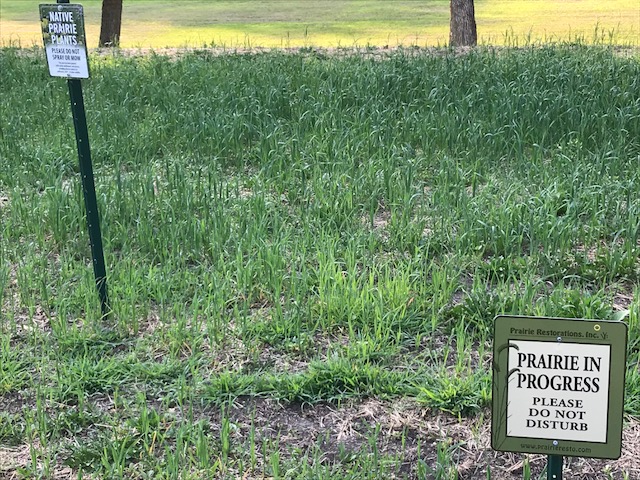



 I was invited because of Giant Pumpkin Suite. There’s a Japanese tea ceremony in the book and the host wondered if I would come and talk about it. Now, the Japanese tea ceremony is not a tea party—it is, in fact, something else entirely. I wasn’t sure I could do it justice speaking about it on my own.
I was invited because of Giant Pumpkin Suite. There’s a Japanese tea ceremony in the book and the host wondered if I would come and talk about it. Now, the Japanese tea ceremony is not a tea party—it is, in fact, something else entirely. I wasn’t sure I could do it justice speaking about it on my own.

 When the writing is going badly…and sometimes when it is going well…I pack up notebooks and pens and printed drafts and head to the
When the writing is going badly…and sometimes when it is going well…I pack up notebooks and pens and printed drafts and head to the  I usually begin with a walk around 3‑mile drive. Then I go to the car and get my things and find a quiet place. I work awhile. Then I wander the gardens…maybe stop in the library…then work again. At some point I have lunch and another proper walk, and maybe a visit to the gift store before I settle down and try to accomplish one more little bit. Certainly there’s another walk before I head home.
I usually begin with a walk around 3‑mile drive. Then I go to the car and get my things and find a quiet place. I work awhile. Then I wander the gardens…maybe stop in the library…then work again. At some point I have lunch and another proper walk, and maybe a visit to the gift store before I settle down and try to accomplish one more little bit. Certainly there’s another walk before I head home. I spent a lot of time (A LOT of time) at the Arboretum when my kids were little. We have many memories scattered through the gardens there. Picnic places under favorite trees, in treasured places, on certain benches. Books we read entirely in the gardens, picking up and walking to another spot of beauty whenever we needed to get wiggles out between chapters. We packed sandwiches and snacks and lemonade and hot chocolate (depending on the season), and always, always books in our backpacks. (I do the same now.) We have loved the summer art exhibits mixed in and around the flowers and herbs, research plots, and gathering spots. This year, there’s an origami theme. I can’t wait to take my big kids, when their schedules release us to summer. It looks like they’ve freshened the maze garden—the shrubberies look right proper. (I’ve got a maze garden in the WIP. This was my excuse for going to the arb this morning—RESEARCH.)
I spent a lot of time (A LOT of time) at the Arboretum when my kids were little. We have many memories scattered through the gardens there. Picnic places under favorite trees, in treasured places, on certain benches. Books we read entirely in the gardens, picking up and walking to another spot of beauty whenever we needed to get wiggles out between chapters. We packed sandwiches and snacks and lemonade and hot chocolate (depending on the season), and always, always books in our backpacks. (I do the same now.) We have loved the summer art exhibits mixed in and around the flowers and herbs, research plots, and gathering spots. This year, there’s an origami theme. I can’t wait to take my big kids, when their schedules release us to summer. It looks like they’ve freshened the maze garden—the shrubberies look right proper. (I’ve got a maze garden in the WIP. This was my excuse for going to the arb this morning—RESEARCH.)
